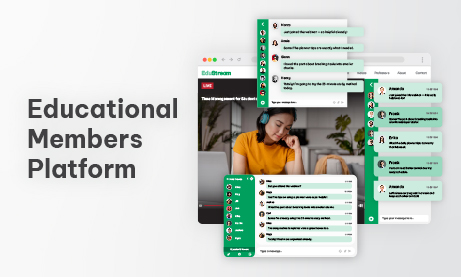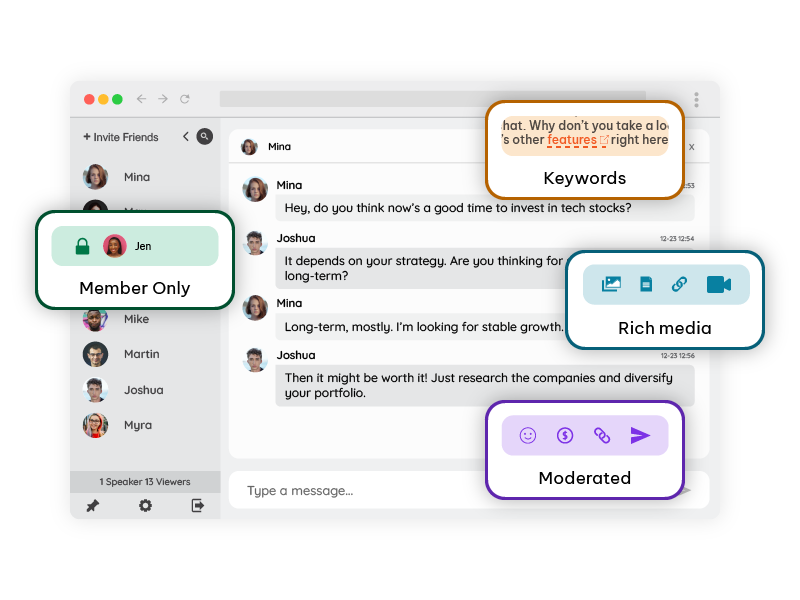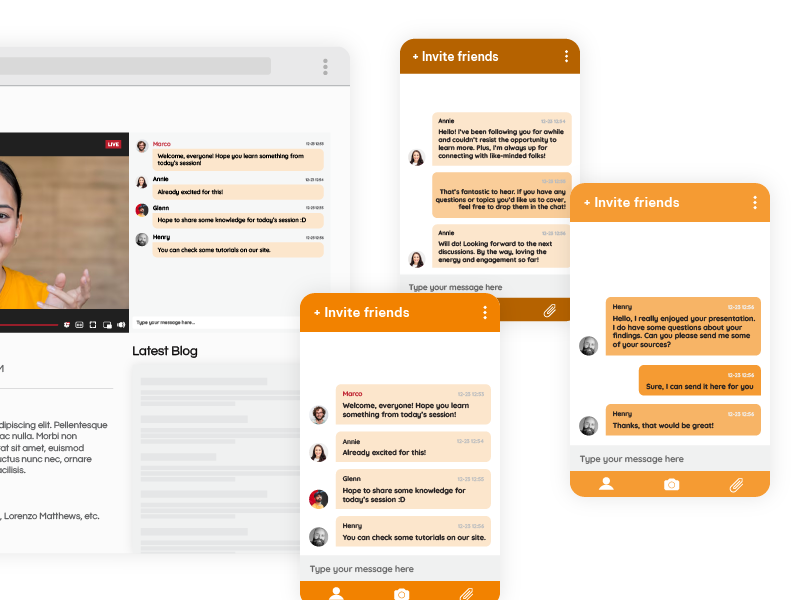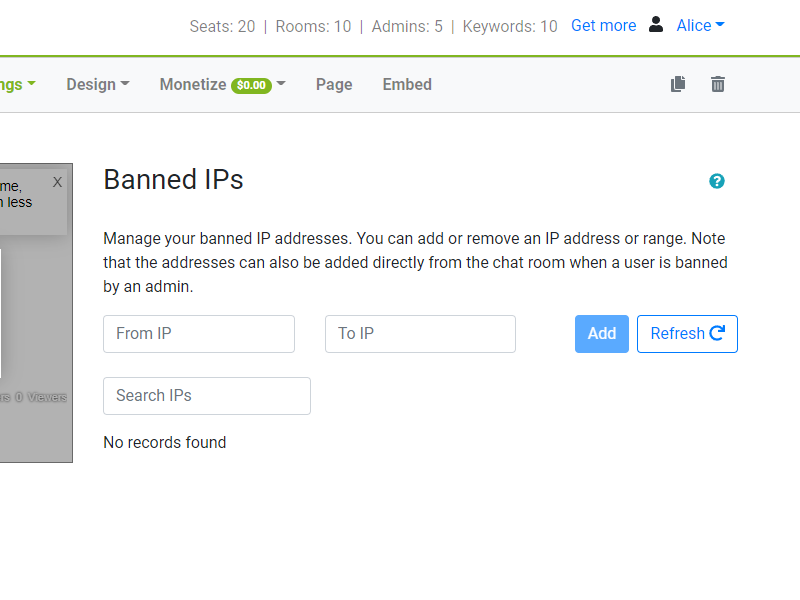Online education has gone through a massive transformation over the past decade. Whether it’s self-paced courses, live cohort-based learning, or hybrid models, one thing has remained essential: human connection.
Yet many educational membership platforms neglect a crucial piece of that puzzle, real-time group chat. Instead, they rely solely on asynchronous communication, like forums or email. This may seem like a minor omission. But in reality, not including an online group chat is a silent barrier to engagement, progress, and retention.
In this article, we’ll explore the hidden costs of not having a group chat in your educational members platform and why adding one is essential if you want to build a connected, successful learning community.
1. Passive Learning Kills Progress
Students don’t sign up for online courses just to consume content. They want to be part of a learning experience. But without a space to ask questions, brainstorm, or collaborate in real-time, learners get isolated. And isolated learners often give up.
When there’s no group chat, here’s what happens:
- Questions go unasked (and unanswered)
- Students feel alone
- There’s no sense of momentum or shared effort
A well-integrated chat provides:
- Instant peer and mentor support
- A place to share discoveries
- Social motivation that reinforces learning
Example:
An online math bootcamp added a chat feature for every module. Students used it to ask for help, post solutions, and even schedule study groups. Completion rates rose by 35% in the first cohort.
2. Limited Teacher Reach
Your educators and mentors can’t do it all via email or pre-recorded videos. Group chat lets them extend their reach without 1:1 time.
They can:
- Pop into discussions
- Address common problems once, not 100 times
- Share links, videos, or clarification on-the-fly
- Schedule real-time Q&A sessions
With roles and permissions, you can:
- Assign teaching assistants to specific rooms
- Segment chats by topic or module
- Create mentor-only or student-only channels
This structure gives flexibility while maintaining control.
3. Built-In Messaging Isn’t Enough
Many LMS platforms have some form of messaging, but it’s rarely usable for real community interaction. Most are:
- Clunky
- Asynchronous
- Hard to navigate on mobile
External group chat platforms built for education offer features like:
- Multimedia support (images, videos, PDFs)
- Emoji reactions and threads
- Pinned messages and announcements
- Responsive design for all devices
Custom Integration Example (SDK)
var chat_login = {
user: {
id: "student_001",
name: "Alex",
avatar: "https://mysite.com/avatars/001.png",
role: "student"
},
hash: "secure_generated_hash_here"
};
This enables seamless auto-login using your existing user system. No extra login required. The result? Higher usage and smoother UX.
4. Engagement Drives Completion
Stats don’t lie:
- Completion rates for MOOC platforms hover around 7-13%
- Platforms with integrated community tools report 2–3x higher engagement
The difference is simple: engaged students stick around.
By adding a chat, students:
- Check in daily
- Celebrate milestones
- Remind each other about deadlines
- Create informal accountability groups
You turn education into a shared journey, not a lonely one.
5. Data Blindness = Missed Insights
A huge benefit of external chat platforms is analytics.
Without chat, you miss insights like:
- Which topics generate questions?
- When are students most active?
- Who are your top contributors?
- Are people confused during specific lessons?
With chat analytics, you can:
- Optimize course structure
- Adjust pacing
- Identify struggling students early
Some platforms even support sentiment analysis, giving real-time emotional pulse on your community.
6. No Chat = No Real Community
An educational platform without chat is like a campus without hallways.
Students need unstructured spaces to:
- Say “hi”
- Share off-topic ideas
- Post links, events, and memes
These moments build loyalty and trust.
With REST API integration, you can create and manage rooms dynamically:
POST /api/rooms
{
"name": "Physics 101 - Cohort B",
"design": "light_theme",
"max_users": 60
}
This makes chat scalable for large or segmented courses.
7. Monetization Opportunities Lost
Group chat can become a revenue driver.
You can:
- Offer premium study groups for paying members
- Bundle “VIP access” to live events in chat
- Run private coaching rooms
Want to offer language exchange rooms or bonus AMAs with experts? That’s easy when you control the chat environment.
You can even embed calls-to-action or donation buttons in chat headers or pinned messages.
8. Your Students Will Use External Apps Anyway
If you don’t provide chat, students will create their own spaces:
- WhatsApp groups
- Telegram channels
- Discord servers
That sounds harmless until:
- You lose moderation control
- Your branding disappears
- Your members splinter
- You get no data or insight
Worse, students may find more value in those groups than in your platform.
Bringing chat inside your platform keeps your community whole.
9. Support Gets Bottlenecked
Without chat:
- Students send support tickets for common issues
- You spend time repeating answers
- Students get frustrated with delayed replies
Chat-based support reduces this burden by:
- Letting students help each other
- Providing a searchable archive
- Routing common questions to bots or help docs
Set up dedicated support rooms by topic or level. Integrate automated responses for keywords like “login” or “certificate.”
10. Learning Is Social and Social Is Motivating
Whether it’s live or async, group interaction boosts motivation. When students share wins, losses, questions, and goals, they feel less alone.
This social glue increases retention, even in dry or technical subjects.
Encourage:
- Daily “check-in” threads
- Friday “wins of the week” posts
- Weekly challenges or quizzes in the chat
You’ll be surprised how powerful these rituals become.
11. Admin & Moderation Tools Give You Control
With a good external chat solution, admins can:
- Ban or mute disruptive users
- Create private or hidden rooms
- Assign moderators
- Monitor flagged content
Chat isn’t the Wild West; it’s structured, manageable, and powerful.
Moderation tools include:
- Word filters (e.g. block profanity or spam)
- Time-based restrictions (e.g. limit posting during quizzes)
- Email alerts when violations occur
12. Works Across Mobile, Desktop, and Hybrid Devices
Modern learners are not always on a laptop. They might be on a tablet at a cafe, or a phone during a commute.
Built-in LMS forums often don’t work well on mobile.
A responsive, mobile-optimized group chat gives:
- Real-time access everywhere
- Push notifications
- Smooth transitions from video to conversation
You keep users inside your learning environment, wherever they are.
13. Foster Lifelong Learning Habits
When students engage with a community, they start to see learning as continuous, not transactional.
Even after a course ends, your chat can:
- Support alumni groups
- Encourage continued peer mentorship
- Promote future courses or certifications
Chat turns your platform into more than a tool; it becomes a learning hub.
Educational Members Platform: It’s Not Optional Anymore
If you want your educational members platform to thrive, group chat is not optional. It’s the difference between a flat content library and a thriving learning community.
By integrating educational members platform chat, you:
- Improve engagement
- Raise retention and completion rates
- Unlock valuable data
- Reduce support tickets
- Create monetization opportunities
And most importantly, you help your students succeed.





